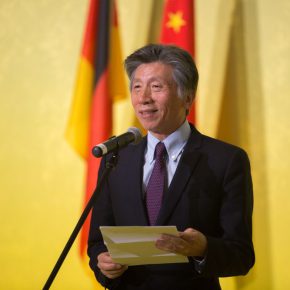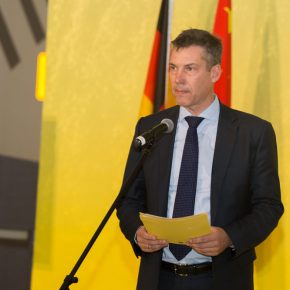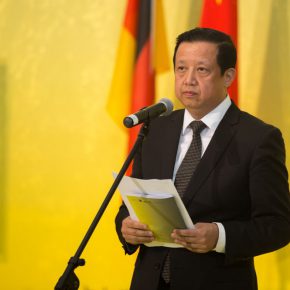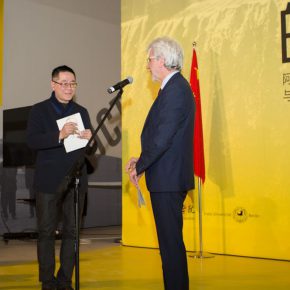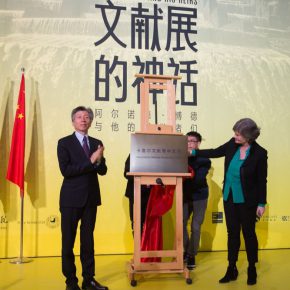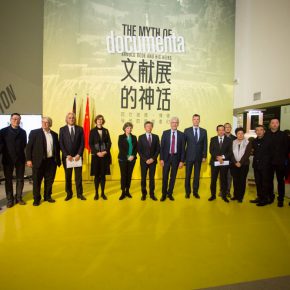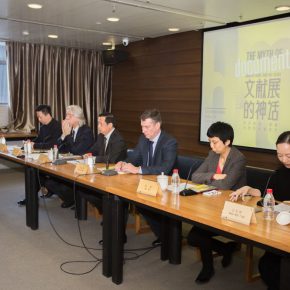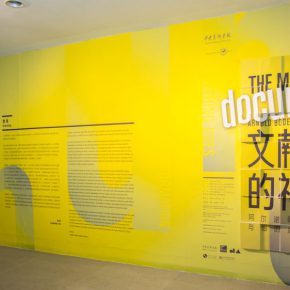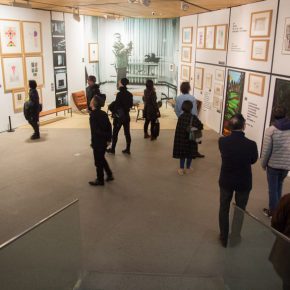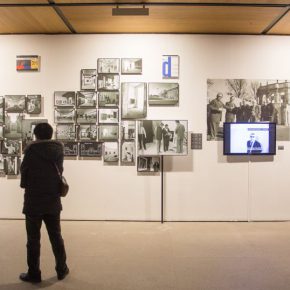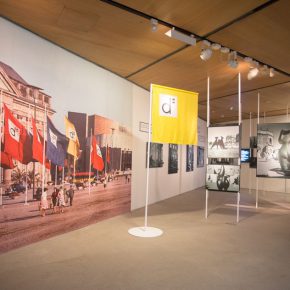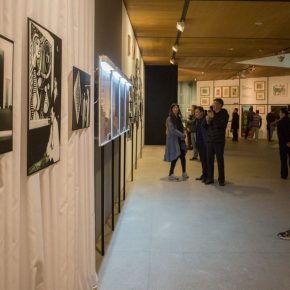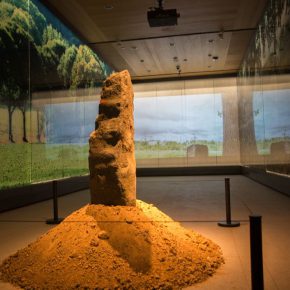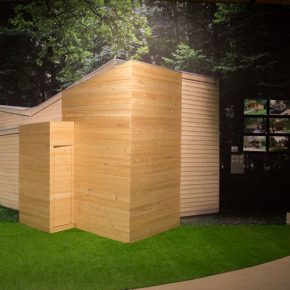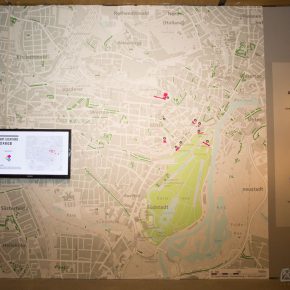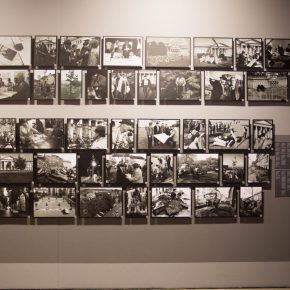A city is known for the presentation of an art exhibition, which almost represents all cultural charms and aura of the city, while even some people don’t know the city until they learn about the exhibition, which is rare and Kassel might be a unique case. documenta, which was held every 5 years, is a major event for cultural and artistic circles and the most important international contemporary art exhibition, the benchmark of aesthetics and social cultural developments since the modern era with a Western and international scope, while each opening of the documenta attracts art professionals, art lovers and tourists from around the world to gather in the central city of Germany, so that it becomes the cultural focus of the world.
Founded in 1955, documenta has been held 13 times in the last 62 years. On March 1, 2017, as the exhibition systematically researches the 60 years of developmental history, “The Myth of documenta — Arnold Bode and His Heirs” opened in CAFA Art Museum. The exhibition was co-hosted by the Central Academy of Fine Arts and Freie Universität Berlin, Yu Ding, Dean of Institute of Arts Administration and Education at CAFA and Klaus Siebenhaar, President of Freie Universität Berlin serve as curators. It features about 300 works and documents about the documenta, including the artistic creation, conceptual manuscripts and furniture design by Arnold Bode, the founder of the documenta, as well as the original manuscripts, drafts and some of the precious originals by the previous art directors of the documenta and key artists, to feature a clear “context” of the documenta as well as the observation and intervention on life and society in different historical and cultural periods.
As the research of the context of the documenta, the logical starting point of the exhibition is naturally focused on 1955 and the founder Arnold Bode was the reason why the exhibition is entitled “Arnold Bode and His Heirs”. Although Arnold Bode was an artist, designer, art teacher, curator, he could not escape from the Nazi’s tyranny and the brutal World War II during the years of growth, fortunately, his artistic passion and talent was displayed in the reconstruction of post-war German order and become the “Father of documenta”. Arnold Bode actively established the documenta in order to develop the modernism which was forbidden in the Nazi period, restored modernism and developed a new post-war contemporary art. Therefore, the documenta has been of an “interrogative” nature from the beginning, he does not only attempt to present the current development phenomenon of an art type, while the first exhibition launched by Arnold Bode has answered a question: What work, or what artistic idea offers a starting point for what we call the “contemporary art” today.
From the questioning to observation, research, formation, it is Arnold Bode and his heirs’ artistic mission, and also the framework and ideas of the exhibition. The main body of the exhibition is divided into four parts: Reconstruction, Transformation, Anything Goes, International Vision, which successively correspond to the gestures, patterns and visions presented in different historical periods of the documenta. Arnold Bode’s first three documentas successfully brought modern art to the cultural vision of the masses, to establish the international authoritative position of the discussion of modern art; In the 1960s and 1970s, while a “counter-culture” trend was prevailed, the documenta actively responded to this cultural challenge, finally becoming the turning and starting point of the artistic and social reform movement, promoted the development of object art, concept artand media art, and it also turned to a process, performance and participatory event; In the 7th and 9th documentas, the exhibition spaces turned into “experience spaces”, which traversed inner and outer spaces similar to passages, so that, documenta exhibitions were no longer only a medium, but a social event – a documenta for all; along with the development of history, in the centurial and worldwide carnival and reflection, the documenta exhibition has also become a“local history of globalization”, exhibition spaces were connected with globalized politics, society, and culture, while different artistic directors respectively use the own "narrative” to explain the status quo of world art.
It can be called a documenta exhibition of documenta exhibitions, German curator Klaus Siebenhaar proposed that exhibition spaces were dedicated to create a field of research, through this exhibition it not only researched the art development process of the 20th century, but also prompted the changes of the documenta in the process of art development, part of the show was about the public response, so that, the art of education or public enlightenment was also one of the clues hidden in the exhibition so it was a show about the history of art, history of exhibition and history of artistic reception.
Arnold Bode curated an exhibition entitled “documenta” in the German garden exhibition, originally aimed at holding a “large-scale international art exhibition”, but he never thought there would be a second one after a few years, and it wasn’t expected to become a “myth” as the meaning of indicator. documenta has created a new concept for art exhibitions and the idea of documenta arrived in China in 1991, and has gradually become a common exhibition label, in order to highlight the research value and academic weight of the exhibition. documenta is held every five years, although it can’t capture art phenomenon as quickly as the biennial exhibitions, it is able to more fully, calmly, distantly observe art, thinking about artistic status quos that have fermented. So that, the documenta dares to include the challenging art creations, causing a variety of social forces to be concerned about it, and also presents an open, free attitude. Chinese curator Prof. Yu Ding comments that, documenta does not only reflect an history, but also presents an understandable German spirit, which is the continuation of the spirit of reason. Perhaps this calm temperament is the external performance of reason.
In the development of contemporary art in China, it has a lot of associations with documenta and it also createsa unit to showcase the relationship between China and the documenta. It is the first time for “The Myth of Documenta” to launch a show about the documenta, while the majority of documents first go out of the database of the documenta, which is of a great significance to Sino-German artistic and cultural exchanges, and it is first major cultural event for the 45th anniversary of the establishment of diplomatic relations between China and Germany. The exhibition kicks off a series of strategic cooperation between the Central Academy of Fine Arts and Kassel Documenta, including the “documenta Website Hosted by CAFA” which is co-operated and jointly developed by the documenta website and CAFA ART INFO, as well as the establishment of the “documenta Research Center” at the Central Academy of Fine Arts. In the myth of the documenta it will present more Chinese figures.
Text by Zhang Wenzhi, Photo by Hu Sichen/CAFA ART INFO
Translated by Chen Peihua and edited by Sue/CAFA ART INFO
Note: The 14th documenta will be exhibited in Kassel, Germany, and Athens, Greece, in 2017



